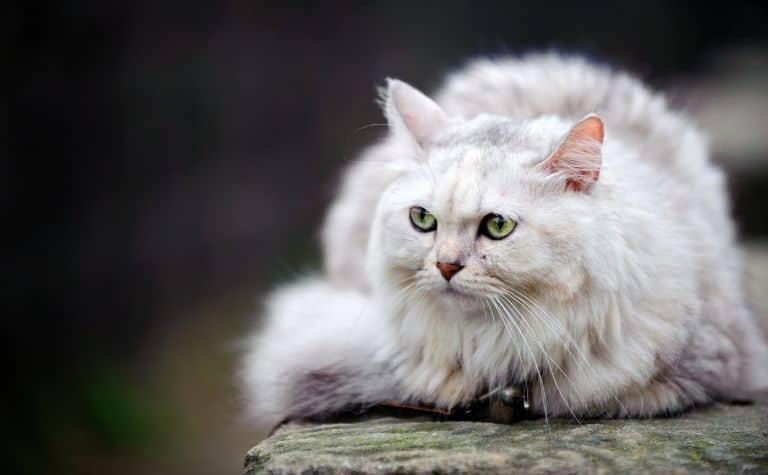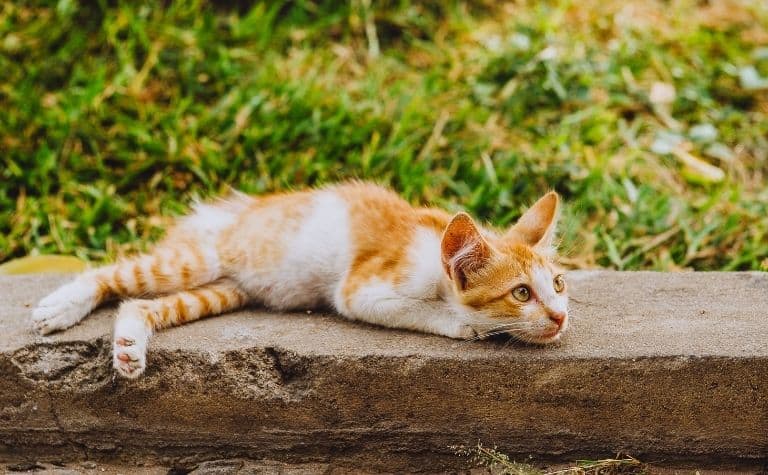Cats have played an important role in many cultures throughout history. People have used them for practical reasons, owned them as domestic companions, and, in some cases, assigned spiritual or mystical attributes to them.
But what about the Vikings? Did they own cats?
The Vikings had cats and used them in a variety of ways. Cats killed mice and rats on ships when the Vikings traveled, which preserved their food and prevented disease.
They served a similar purpose at places the Vikings raided. People also gave cats as wedding presents due to their association with the Norse goddess Freya.
To learn more about Vikings taking cats on longboats and on raids, see below. Also discover more about people giving cats as wedding presents and their association with Norse mythology.
Also see Were There Black Vikings? to learn more.

Did Vikings take cats on their boats?
Vikings owned various animals such as pigs, dogs, and birds. However, they especially valued cats and used them as working animals as well as household companions.
Vikings would even take cats on their ships when they sailed in the waters of northern Europe and when they went raiding.
The Vikings traveled with cats: it may be hard to imagine Vikings taking cats on their longboats, but the Norsemen frequently traveled with them even as they stormed enemy shores.
Such trips were often long and arduous journeys upon which cats usually served to control the mouse and rat populations.
Rodents carried many diseases and caused — or contributed to — cataclysmic events in the Middle Ages like the Black Death [1]
The Vikings used cats at home: the Vikings have a reputation as violent raiders, but when they were home, many were simple and peaceful farmers who worked hard for a healthy crop.
Since Viking villages were mostly located near rivers, lakes, and streams, which are prevalent in Scandinavia, rats were a constant problem.
Vikings used cats to drive hungry rats out of the fields to protect their food supply. (Also see Did Vikings Live in Clans? Viking Society Explained)
Cats for clothing and accessories: According to Kristian Gregersen of the Natural History Museum of Denmark, when scientists found 68 cat remains in an old well in Odense, Denmark, historians deduced that Vikings killed felines for fur.
Additional research has shown that Vikings would use the bones of the cats to make amulets. [2]
Because Vikings used cats in these ways, some villagers farmed cats for these purposes. (Also see The Viking Dress Code: What They Wore and How)
Cats as spirit animals: The Vikings believed that cats were the spirit animals of the goddess Freyja.
In certain descriptions found in Scandinavian literature of the Middle Ages, Freyja is depicted with cats.
In one image, cats are pulling Freyja in a chariot like a horse would. In another image, cats sit alongside Freyja as companions, composing a part of her mythological identity. (For more about Freyja see 25 Norse Gods to Know)
Also see Did the Vikings Have Tattoos? to learn more.

Why Did Vikings Give Kittens to Brides?
During the Viking Age, a man would sometimes give kittens to his bride as a symbol of their new life.
Generally, a bride would receive cats for their wedding from multiple people because of their association with the Norse goddesses Freyja. (Also see Here Is How the Vikings Proposed and Got Married)
According to one Scandinavian legend, the Norse god Thor gave Freyja cats as a gift.
According to another story, Freyja sat on a cart pulled by big cats specifically, the Skogkatt, which was a big and strong Forest cat. Scientists believe cats were bigger during the Viking Age due to better feeding. [3]
Though Freyja was known for her love of cats, she was also the goddess of luck and could determine someone’s future. Like Freyja and the unpredictable life she lived, cats are also unpredictable.
Despite knowing Freyja’s admiration for felines and that killing cats could cause misfortune, the Vikings sometimes sacrifice them in rituals.
Some speculate that the Vikings did this to communicate with the spiritual realm and ensure the attention of certain gods. [4]
Vikings believed that their crops would thrive if Freyja passed through their fields.
People would leave milk for Freyja’s cats, believing that she would bless their produce and give them good luck.
Young males at the time would always favor women who loved cats.
Some believed that spouses who loved cats were more likely to have a happy life together. (Also see 15 Facts About Viking Women)
There is no record of what Freyja called her cats. Some speculate that the cats didn’t have names, but no one knows for sure.
Also see Facts About Viking Women to learn more.
What Cat Breeds Did Vikings Have?
Studies of the DNA of a cat found at a Viking site in Germany revealed that it was similar to that of an Egyptian feline.
Historians believe that cats in the Viking age were not as small as domesticated cats that are common today.
Big cats, known as Skogkatt, or “Forest Cat,” were believed to be companions of the Vikings.
In Norse mythology, the goddess Freyja is depicted sitting on a cart pulled by two blue-grey male gib-cats. (Also see Norse Mythology vs Christianity: What’s the Difference?)
It’s unclear what cat breeds pulled Freyja’s chariot, but they were abnormally large.
According to Norse mythology, Freyja loved the Norwegian Forest cats above all others.
The Origin of the Viking Cats: Two main migrations caused cats to travel across the world.
Historians believe that the first migration came from the Middle East a few thousand years ago. The second migration came from Egypt.
Migrations became easier when people refined boat-building and sailing.
Why Vikings Kept Cats: Did the Vikings domesticate cats? Perhaps some did, but it wasn’t their primary purpose. Cats controlled the mouse population in the villages and on the boats and were rewarded for their work.
What cats symbolized to the Vikings
Cats had a special place in the Viking Age. Felines of this era were adored, loved, and respected. As stated above, cats were associated with the goddess Freyja.
Freyja was known for her beauty, femininity, and nurturing nature.
Like the goddess, cats are beautiful creatures, and they behave femininely in every step they take.
Cats are unpredictable, just like the life Freyja created for humankind.
Cats also represent independence. Although cats can form social groups, they are not considered “pack” animals and often walk alone.
Freyja is known as the war goddess, who is strong and independent, kind and gentle.
Both Freyja and her cats are somewhat mysterious and unpredictable.
Final Thoughts
Vikings often kept cats, which were likely Norwegian Forest Cats. Cats have long been associated with Freyja, the goddess of love, luck, and fertility.
People in the Viking Age thought that gifting cats or kittens brought good luck to newlyweds.
Cats and Vikings shared mutual benefits. The warriors used cats to control the mice population and as companions, whereas cats could rely on Vikings for food and shelter.
Cats were also used for their fur and bones, and even in ritual sacrifices.
Also see 250 Viking Boy Names to learn more.
